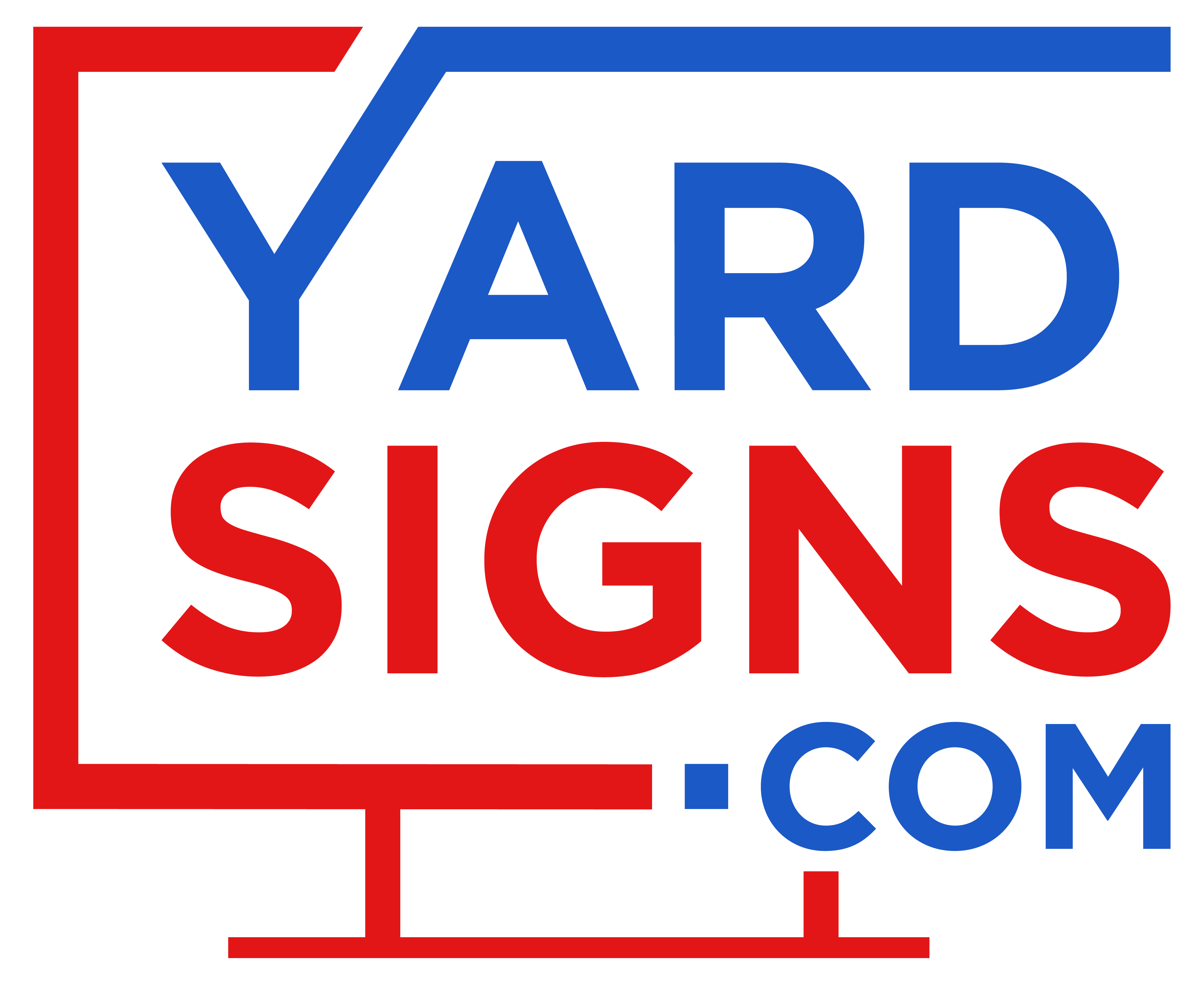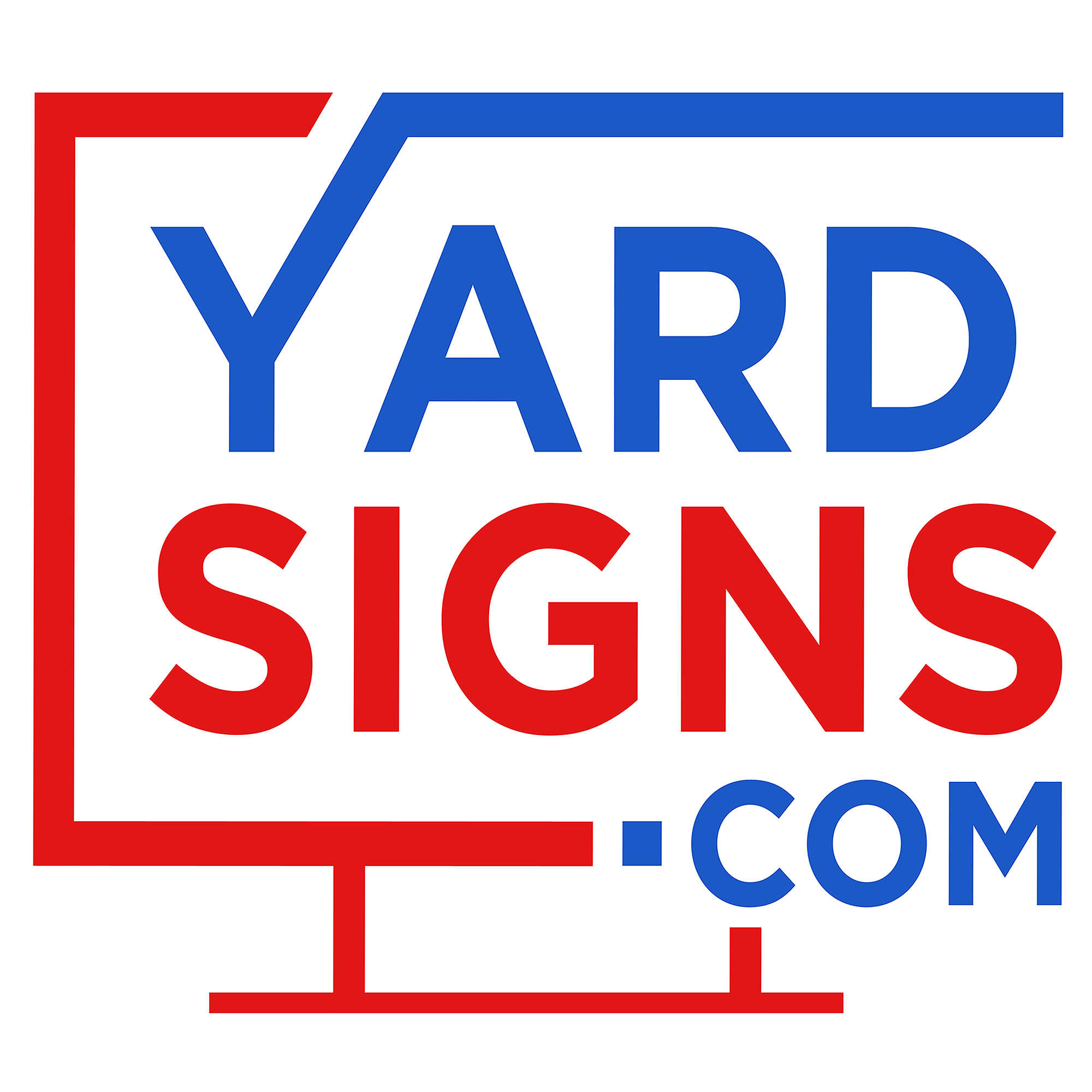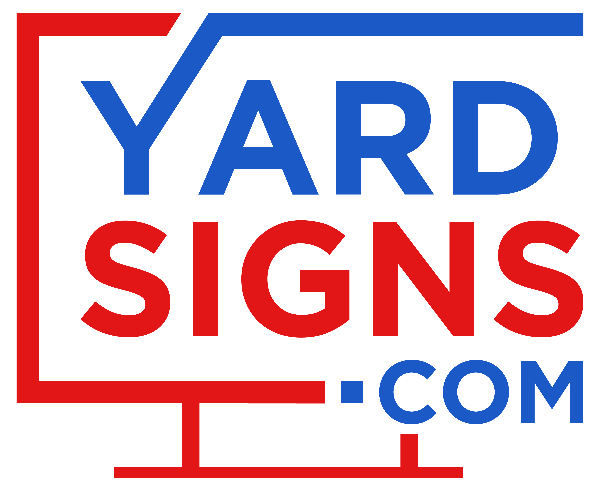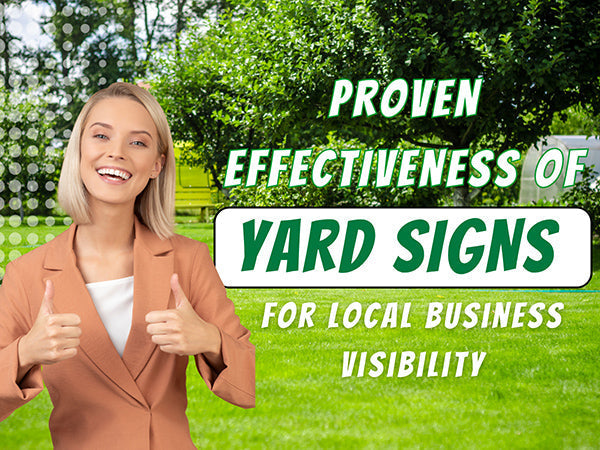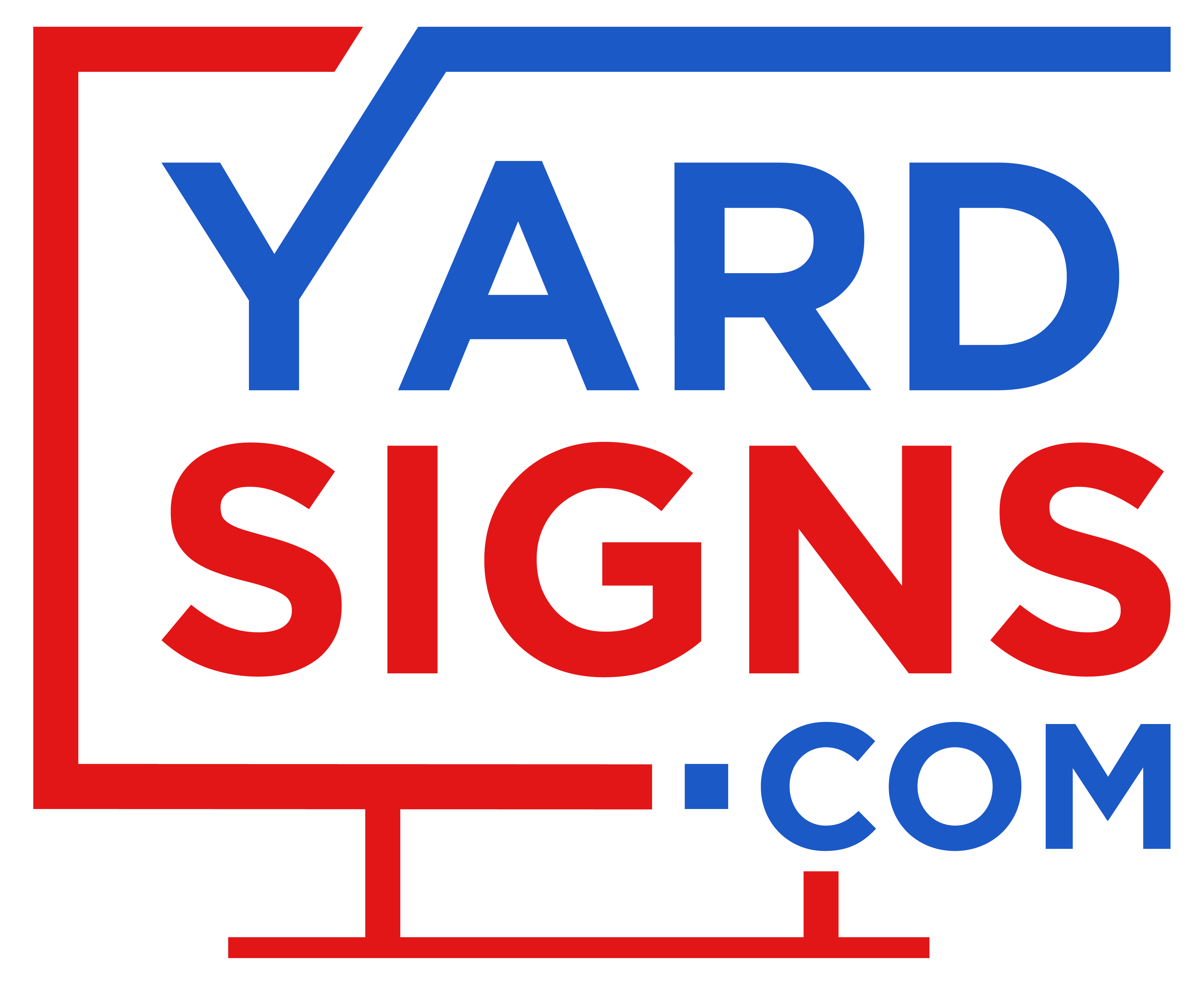Yard signs are a common sight in neighborhoods and along busy roads. Local businesses often use them to share their message with people nearby. While common, many wonder how effective they really are in helping businesses grow.
Research shows that yard signs can play a valuable role in local marketing. They are visible, affordable, and easy to place near homes, jobsites, or storefronts. For businesses looking to reach customers in a specific area, yard signs offer a direct way to do it.
This article explains how yard signs work, what makes them effective, and how they compare to other forms of advertising. It also covers how to design and place them for the best results.
Why Yard Signs Are a Local Marketing Essential?
Yard signs are physical signs placed in lawns, along roadsides, or near businesses to promote services, events, or messages to local audiences. Because they are situated in everyday locations, they are often seen by people who live or work nearby.
Studies indicate that about 35% of customers discover new businesses simply by seeing their signs while passing by. This rate is higher than word of mouth (14%) and traditional advertising like flyers (10%), making yard signs an effective tool for local visibility.
The cost-effectiveness of yard signs stands out when compared to other advertising methods:
- Low cost per impression: Yard signs can cost as little as $0.02 per 1,000 views
- One-time investment: Unlike digital ads that require ongoing payments
- 24/7 visibility: Signs remain visible day and night without additional costs
Unlike digital ads, yard signs create a physical presence in the community. People become familiar with a brand simply by seeing it regularly as they drive or walk through their neighborhood.
Proven Benefits for Small Businesses and Contractors
Service-based businesses like landscapers, pressure washers, and home improvement contractors often place signs at job sites to gain visibility with neighbors. This practice helps them become recognized in the areas where they work.
Research suggests that a single on-site sign can increase business by up to 16%. For service professionals, this visibility often results in new inquiries from neighbors who saw their work and the identifying sign.
Yard signs also provide "social proof" – when people see a contractor's sign outside a neighbor's home, it signals that someone nearby has already trusted that service. This influence can be particularly strong for local service providers.
Real-world results show the impact of yard signs:
- A pressure washing company tracked that 60% of spring inquiries came from homes within two blocks of prior job sites with yard signs
- A landscaping business documented a 22% increase in local leads after placing signs at neighborhood entrances
Different business types see varying levels of effectiveness from yard signs:
|
Business Type |
Effectiveness |
Best Use Case |
|
Real Estate |
Very High |
Outside listed properties |
|
Contractors |
High |
Near renovation projects |
|
Landscaping |
High |
After completed lawn work |
|
Service Pros |
Moderate-High |
Job sites and neighborhoods |
How To Design Yard Signs That Grab Attention
Effective yard signs use simple design elements that help people process information quickly. This includes readable text, strong contrast, and clear calls to action.
When a yard sign looks like a business's other materials (like business cards or websites), it helps people recognize and remember the brand more easily.
Keep Text Large and Readable

For yard signs to be effective, people need to read them quickly, often while driving past.
Text size directly affects how far away a sign can be read:
- Distance matters: For signs viewed from 30-50 feet, letters should be 3-5 inches tall
- Font choice affects readability: Sans-serif fonts like Arial or Helvetica are easier to read from a distance
- The 3-second rule: People should understand your message within three seconds of seeing it
Too many words, small fonts, or complex layouts reduce the chance that someone will notice or remember your message.
Use High-Contrast Colors
Color combinations with strong contrast make text and images stand out. Black on white, white on blue, and yellow on black create sharp differences between the background and text.
Different colors can also communicate different feelings:
- Red suggests urgency or action
- Blue represents trust and reliability
- Green connects environmental or outdoor services
For outdoor signs, a contrast ratio of at least 4.5:1 between foreground and background colors improves readability in varying light conditions.
Include A Concise Call to Action
A call to action (CTA) tells viewers what to do next. Effective CTAs use direct language like "Call Today", "Book Now" or "Free Estimate".
Contact information should be easy to remember while driving or walking past. This typically includes:
- A simple phone number
- A short website address
- A QR code that links to more information
QR codes have become increasingly useful as most smartphones can now scan them directly with the camera app, connecting physical signs to digital content.
Best Practices for Placement and Visibility
Where you place a yard sign greatly affects how many people see it. Signs in high-visibility locations at appropriate heights are more likely to be noticed and remembered.
Strategic placement considers traffic patterns, sight lines, and environmental conditions. The goal is to position signs where people naturally look while driving or walking.
Target High-Traffic Spots
Locations with frequent vehicle or foot traffic offer more opportunities for signs to be seen:
- Intersections: Where cars slow down or stop
- Neighborhood entrances: Where residents and visitors pass daily
- Near community spaces: Parks, schools, or shopping areas
- Along main roads: Where consistent traffic flows
To identify the best spots, observe an area at different times of day. Notice where cars slow down and which side of the road gets more traffic.
Be aware that some locations require permission or permits. Public property is typically regulated by local ordinances, and private property requires owner permission.
Position At Eye Level
Signs placed at or near eye level are easier to notice. For drivers, the average eye level is about 4.5 to 5 feet from the ground.
Research shows that signs placed between 3 and 5 feet high are most likely to fall within the visual field of someone in a passing vehicle. Signs placed too low may be blocked by parked cars or roadside objects.
For stability, stakes should be inserted 10-12 inches into the ground. In windy areas or soft soil, deeper placement helps prevent the sign from leaning or falling over.
Ensure Unobstructed Views

A sign is only effective if people can see it clearly. Before placing a sign, check that it's visible from multiple angles and distances.
Seasonal changes affect visibility:
- Summer: Growing leaves and plants may block signs
- Winter: Snow piles can cover or hide signs
- Spring/Fall: Changing light conditions may affect readability
Distance from the roadway also matters. Signs too close to the road may be hard to read at speed, while those too far back might go unnoticed. Typically, 6-10 feet from the curb balances visibility and safety.
Ways to Compare Yard Signs to Digital Ads
Yard signs and digital ads represent two different approaches to local marketing. Each has distinct advantages and limitations worth considering.
The cost comparison between these methods is significant:
- Yard signs: Average cost per 1,000 views (CPM) of $0.02
- Facebook ads: Average CPM of $7.19
- Google Ads: Average CPM of $2.32
These numbers vary by industry and location, but yard signs consistently offer lower costs per impression.
Targeting capabilities differ substantially between these methods:
- Digital ads: Target based on interests, behavior, demographics
- Yard signs: Target based on physical location only
Each method works differently:
- Digital ads appear based on algorithms and online behavior
- Yard signs are visible to anyone passing by, regardless of online activity
Many businesses use both methods together. For example, a roofing company might place yard signs at job sites while running targeted ads to people searching online for roof repairs.
Key differences between yard signs and digital advertising include:
- Longevity: Yard signs remain visible for weeks or months, while digital ads appear briefly
- Local impact: Yard signs create physical presence in neighborhoods where services are offered
- Trust factor: Physical signs in a community often carry more credibility than online ads
- Cost structure: Yard signs involve a one-time purchase versus ongoing ad spending
Measuring Your Return On Investment
Return on investment (ROI) measures how much value a marketing method brings compared to its cost. For yard signs, tracking leads, calls, or sales that came from seeing the signs helps determine their effectiveness.
Studies suggest yard signs can generate returns ranging from 3 to 10 times their initial cost, depending on placement, design quality, and local market conditions.
Track Calls or Web Visits
One simple way to measure yard sign performance is using a unique phone number or website address that only appears on the signs:
- Dedicated phone numbers: Services like Call Rail can track how many calls come from specific numbers
- Custom URLs: Creating a special web address for yard signs helps count visitors who found you this way
- UTM codes: Adding tracking parameters to URLs helps identify traffic sources in analytics tools
For example, a plumber might use the phone number 555-1234 on yard signs and 555-5678 on other advertising. By comparing call volumes, they can see which method generates more interest.
Use Unique Coupon Codes
Special offers with unique codes help track responses to yard signs. Each campaign can use a different code to identify where customers are coming from.
Examples of effective coupon codes include:

- Neighborhood-specific: "OAKWOOD20" for signs in the Oakwood area
- Seasonal: "SPRING10" for spring cleaning services
- Service-specific: "NEWROOF" for roofing projects
These codes can be mentioned during phone calls or entered online to receive the offer. Tracking which codes are used helps measure the effectiveness of different sign locations or designs.
Monitor Seasonal Impact
The performance of yard signs often varies by season. Signs placed during spring and summer typically receive more attention due to:
- Longer daylight hours
- More people outdoors
- Increased home improvement activity
Comparing data across different seasons helps identify when yard signs are most effective for specific businesses. For example, lawn care services might see better results in spring, while snow removal services would benefit more in winter.
Weather conditions also affect sign durability. Signs exposed to harsh elements may need replacement more frequently to maintain visibility and professional appearance.
Your Next Step for Powerful Local Presence
Yard signs provide a visible and cost-effective way for businesses to increase awareness in specific neighborhoods. With costs as low as $0.02 per 1,000 views and their ability to target precise geographic areas, they remain a practical option for local marketing.
The most effective yard signs share these characteristics:
- Simple, easy-to-read messages
- High-contrast colors
- Clear contact information
- Strategic placement in high-traffic areas
When designing yard signs, focus on what matters most to potential customers in your area. For service businesses, this often includes:
- The service you provide
- A benefit or special offer
- How to contact you
- Your business name and logo
Yardsigns.com offers custom yard sign options for businesses of all types, with templates available or fully customized designs. Their materials are selected for outdoor durability and print clarity.
Order your custom yard sign today!
FAQs about Yard Signs for Business
How much do effective business yard signs typically cost?
Business yard signs typically cost between $15-50 per sign depending on size, material quality, and quantity ordered, with bulk orders significantly reducing the per-unit price.
How long do yard signs last in outdoor conditions?
Quality yard signs made with corrugated plastic or polyethylene typically last 6-24 months outdoors, depending on weather exposure, material thickness, and print protection.
What size yard sign is most effective for business advertising?
The most effective yard signs for business advertising are typically 18""x24"" or 24""x36"", offering optimal visibility from passing vehicles while providing enough space for essential information.
How many yard signs should a local business deploy for maximum effectiveness?
For maximum effectiveness, local businesses typically need 25-50 yard signs strategically placed throughout their service area, with concentration in high-traffic areas and neighborhoods where target customers live.
